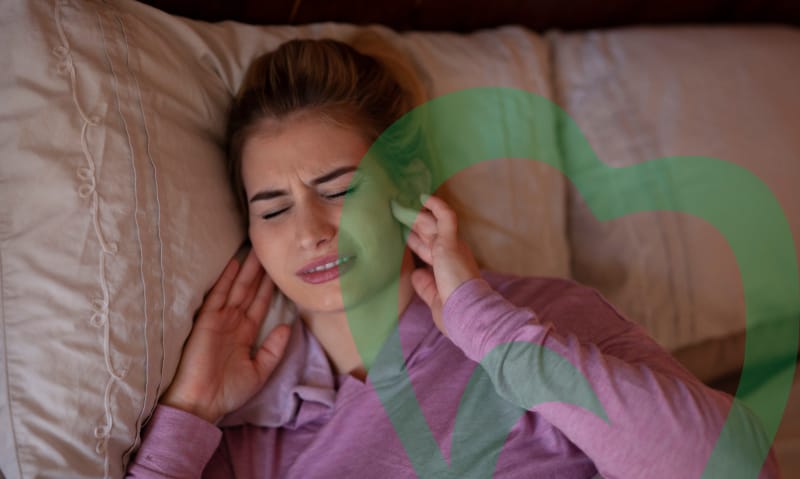7 Do’s and Don’ts for People Dealing With Temporomandibular Joint Disorder

A real pain in the neck!
TMD, or temporomandibular joint disorder, can wreak havoc on the body. It can cause headaches, jaw pain, neck pain, face pain, and even poor sleep. You might not realize how much you really use your jaw until every movement sparks some kind of pain! You try to eat, and it hurts. You sleep on your side, it hurts. You might have a busy day planned, but you’re stuck with headaches caused by your TMD. Life can be miserable when you’re constantly in pain!
If you are one of the roughly 30% of people with at least one TMD symptom, you are not alone in your discomfort. We’re here to help you finally find relief. To help you through your day-to-day life, we’ve got a quick list of do’s and don’ts to keep that jaw pain at bay.
What is TMD and TMJ?
TMDs, or temporomandibular disorders, consist of a group of roughly 30 disorders that cause pain in the joints of the jaw. There are three main classes of TMD. The first is disorders of the joints, the second is disorders of the muscles, and the third is headaches caused by TMD.
TMJ is often confused for TMD. When using the term TMJ, it refers specifically to the joint itself, not the pain or disorder.
TMD can occur from trauma to the joint or be formed over time by a problematic bite. Because of this, people who have bruxism, meaning they grind their teeth, are at a higher risk of developing TMD. The symptoms can last for years or just be temporary. But no matter how long the discomfort lasts, it is not an enjoyable condition to have.
The symptoms of TMD include pain in the jaw, neck, shoulder, or back, as well as stiffness in your jaw, limited jaw movement, clicking or popping of the joint, changes in how the teeth fit together, headaches, and a ringing in the ears (also known as tinnitus). While getting treatment for your TMD requires help from your dentist or other health professional, there are some things you can do at home to minimize the painful symptoms.
1. Avoid hard or crunchy foods.
Try to eat soft foods whenever possible. This will reduce the force you place on your jaw as you chew. On those times when you are faced with meals that are harder to chew, don’t be afraid to cut them up into bite-sized pieces. Your jaw will thank you!
2. Don’t pop your jaw.
Be careful not to move your jaw in any strange position that produces grinding or popping sounds. If your jaw is making these noises in protest, the pain won’t be far behind.
Instead of popping the jaw, try applying heat or ice to the affected area for some pain relief.
3. Don’t clench or grind your teeth.
Don’t grind those teeth! Try to be aware of your jaw’s position and whether your teeth are touching. Whenever you are in stressful situations, try to relax your head, neck, and facial muscles. This will help keep that tension from sneaking up on you.
4. Don’t breathe through your mouth.
Instead, breathe through your nose. Sure, sometimes things happen. Perhaps you have a cold, or you exercised a little harder than you originally planned. Whenever possible, try to keep a good oral posture. You want your tongue to be at the roof of your mouth, lips closed, and teeth slightly apart.
If you have anything hindering your ability to breathe through your nose, be sure to address it. For example, a deviated septum can make breathing through your nose significantly harder. Having disordered breathing, especially during sleep, can drastically affect your mental health.
5. Don’t chew gum.
Put the gum down! Because chewing gum requires constant movement of the jaw, it can quickly exacerbate any pain that you might have.
6. Don’t chew on hard items.
Don’t chew on the lid of your pen, your fingernails, or whatever else you might be drawn to. As an alternative, try to practice jaw exercises given to you by your dentist to alleviate TMD symptoms.
7. Do tell your dentist!
When starting down the path of diagnosing TMD, you first need to get an evaluation. Don’t be afraid to give us a call or request an appointment online. We’d love to help restore your mouth to its former pain-free glory. Whether you are in need of restorative dentistry, a professional cleaning, teeth whitening, or relief from your jaw pain, we are here for you every step of the way.